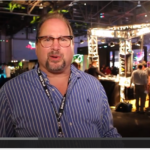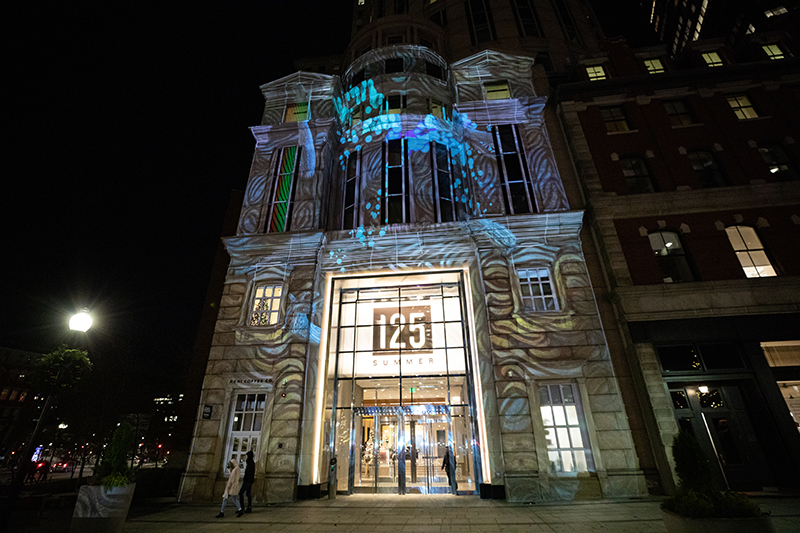
What happens when artists intervene in public spaces and super impose their creative interpretations by doing an overlay of light, projection, performance and music onto existing public environments? Jeff Grantz, director of creative technologies for Design Communications Ltd. and founder of Boston’s Illuminus Festival, has been exploring the answer to that since 2010, when he was first challenged to create what he calls an “Urban Takeover.” The Illuminus team and this year’s selected artists worked with projection technology provider Epson to re-contextualize Boston’s Financial District through the lens of an artist, quite literally. With Illuminus, what is usually only experienced by limited crowds in small gallery settings is now a public festival viewed freely by thousands
The Illuminus Light Festival, which has grown considerably since it was launched in 2014, has lit up different parts of the city over the years including Boston’s South End and Downtown Crossing neighborhoods along with Fenway Park. The 2019 event brightened a 10-block portion of the city’s Financial District surrounding 100 Summer Street, where the opening reception highlighted that building’s recently renovated lobby. The lighting projections could be seen Dec. 5 and 6 from 5 p.m. to 11 p.m.
At its core, Illuminus is a study in experimenting with the boundaries of an artist’s intent; utilizing their collective vision of social commentary through the melding of projection mapping and city architecture. This event is part of a larger effort to repurpose the urban landscape; to demonstrate how art, society, and commerce cannot only coexist but thrive through creative programming.
Supporting and communicating that message would not be possible without one of the festival’s main technological partners, Epson, the exclusive projector provider for Illuminus 2019. This year’s artists were able to display their work on a larger scale with Epson’s contribution of more than 50 projectors through their local partner 4Wall Entertainment in Canton, MA. “This event would not have come to fruition without their strong support,” says Grantz.
The conversation leading to the 2019 collaboration took place over several years, during conferences where Grantz and Epson product manager Gavin Downey would brainstorm on how to make this happen. “Gavin and his associate, [product manager] Ramzi Shakra, approached me several times,” recalls Grantz, “expressing their interest in what we were doing with Illuminus, and to let them know should any opportunities arise where Epson could support our artists.”
Finally Grantz told them he had a budget to cover the production of Illuminus 2019, but had not yet found a technology partner who could provide the amount of projectors needed to light up several blocks of downtown Boston. Epson came back with their offer to provide all the projectors for the event, marketing support and technical expertise to help insure the show was a success.
Epson’s Shakra had worked with Grantz previously in support of various projection projects at Design Communication Ltd. Boston. “He has experience with Epson projectors, and we’ve been connected in a support capacity. We were very excited to learn about his involvement with Illuminus,” Shakra says.
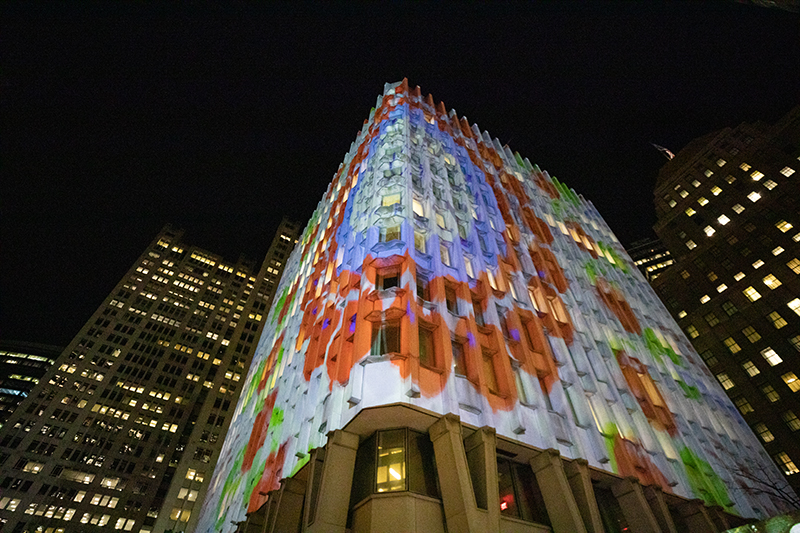
A Symbiotic Relationship
Epson is world renowned for their paper, ink, and fine art photography printing. “Inside of Epson,” starts off Downey who manages large venue Epson video projectors, “we have a history of reproducing fine art photography. Now, working with fine art photographers as they transition from film to digital really just harkens back to those roots and continues with artists using projection mapping. I think they are ahead of the curve in augmenting what is going to be next in terms of display technology and the use of projection in ways not being used today.”
For these very same reasons, Downey says Epson has pursued artists working in a variety of mediums and projection mapping. “It is a symbiotic relationship, and light festivals such as Illuminus are excellent proving grounds for that. We want to help bring the artist’s vision to life and better understand what they are doing with the equipment. In the collaboration we hope to discover what they would like the equipment to do that it is not doing today. We think it is a wonderful source to get ahead of the curve so to speak, from a technical and feature standpoint.”
“The idea of inviting people out to view artists work in a public space is not an original idea,” Grantz claims, “It just has not been explored enough in Boston, which despite being a hub of science, art and technology, still lacks in opportunities for artists and creatives to present their work to the public. We rarely have an opportunity to come out into a public space to celebrate all the talent, similarities and aspirations that we share. That’s really what this is all about.”
The goal is also to challenge city planners and developers to provide artists with more opportunities to get their work out into public spaces and activate city streets more regularly. They’re taking art off the walls of galleries and placing it on the sides of the city’s buildings and streets.
With just over 900,000 lumens emanating from over 54 projectors in their Pro Laser and PowerLite Series, Epson is clearly setting the standard not only for future light festivals around the world, they are helping to usher a new era in large-scale projection altogether.
“We are interested in building relationships with artists who are creating innovative displays with projection technology,” says Shakra. “Illuminus was a great opportunity for us to meet with a range of different artists at once and discuss how they use projection technology in their installations.”
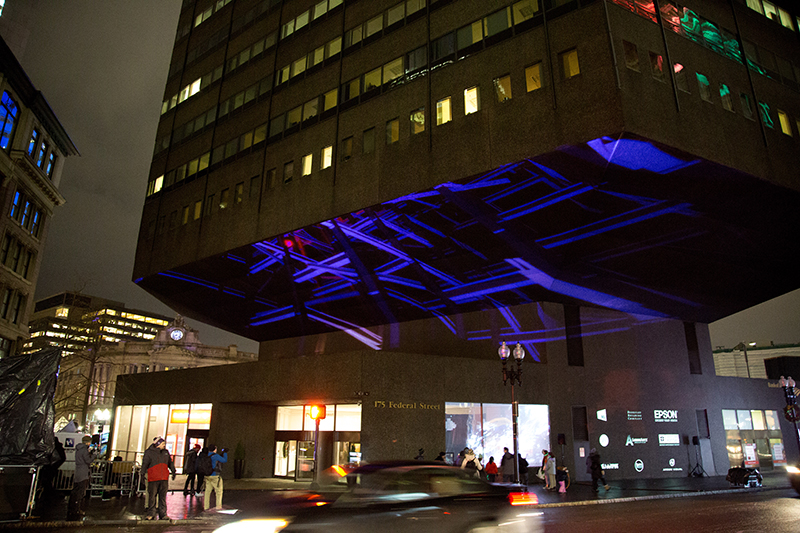
The Artists
Seventeen artists presented their concepts spanning the ten block area in downtown Boston. David Guerra is a curator, and the owner/founder of A R E A, a multi-format and interdisciplinary gallery in Boston that organizes exhibitions and experiences. Since November 2016, A R E A has featured the work of local and international artists and designers. His gallery welcomes creatives of diverse social and cultural backgrounds. His passion for innovation in the arts has led him to collaborate on a variety of projects and exhibitions as a curator in Boston.
Vanessa Till Hooper is the creative director for the festival. She has been working with Grantz since Illuminus inaugural event in 2014. “I moved from L.A. to work with Jeff and hone my skills in light and technology-based art,” says Hooper. “This work is all about the magic of place making through temporary activation. Though these installations leave no mark, they profoundly influence the way we perceive our city.”
In her third year with Illuminus, she stepped into the role of creative director. What continues to draw her to put on the Illuminus festival is the increased accessibility to the artist community. “Working with projectors can be intimidating for artists new to the medium or just inaccessible because of the cost or specific knowledge required. Illuminus invites artists of other disciplines into this new medium and gives the support that’s needed to discover and experiment on a canvas that is enormous compared to what they can do as a single artist. I love that Illuminus removed these barriers.”
“Some of the artists had not used projection at this scale or brightness before,” Shakra continues. “Overall, we received very positive feedback surrounding the color accuracy and brightness of our projectors and the ability of the projectors to withstand the cold environment.”
For his latest installation, Expansion, artist Daniel Alexander Smith (danielalexandersmith.com) was projecting on a building with a very dark surface that required a projector with a lot of lumens. Epson recommended its Pro L25000U as it features 25,000 lumens of color and white brightness for extraordinarily bright content. Additionally, the artist integrated a few smaller PowerLite 2250 projectors into his piece to help enable the interactive elements of the artwork.
Smith is a Boston artist using computer-aided fabrication along with traditional craft processes and historical art practices to examine the impact of technology on culture. Recent works include Restoration, a low-tech exploration of the destruction of craft in the fire at Notre Dame Cathedral in Paris; Four And No Waves, an installation using machines to reconstruct the form of water; and Paper-Thin, an experimental VR art platform for collaborating across the internet. “I’m very technology centric,” he laughs.
Smith explains the concept behind Expansion, a dynamic projection on Boston’s downtown architecture that responds to street level pedestrian activity. “In Boston, the skyline changes faster than we can,” he says. “As our urban fabric extrudes heavenwards, people become the collateral of a new economic expansion. We fall continuously into the skeleton of a procedurally generated skyscraper. All around, we see the glowing bodies of others hurtling past. As they crash into the structure, light explodes from their bodies, illuminating architecture with firefly pulses.”
The Summer Street Luminism also projected content onto the face of a building. Though the surface was lighter, the building was still large, and the mapping was fairly complex. “Our Pro L25000U was the right projector choice as it is designed for applications of this scale,” says Shakra.
Andrew Hlynsky from Nhode Island (nhodeisland.com) is a creative technologist specializing in generative and interactive projects. He has worked on a variety of cooperative and artistic projects and currently works as a freelance TouchDesigner developer as well as a lecturer at School of the Museum of Fine Arts at Tufts University. “Pedestrians walk through the park directly in front of 125 Summer Street, their footsteps creating different patterns on the building. The projection style will slowly shift and change throughout the event as people travel through,” explains Hlynsky.
He “skinned” the model using photographs that slowly blended together, creating images for the building surface. Through a process called UV mapping, these pictures were assigned to specific faces inside the 3D model. He then took the 3D camera inside the environment and angled it similar to the way the audience was viewing the building. Then he brought it into Resolume and stretched the parameters of the images. Sensors surrounded the immediate area which detected human movement and created interactive actions in the projection.
“While we are the largest projector manufacturer in the world, we are relatively new to working in the live event space,” says Downey, adding that Epson is “very interested in receiving feedback on what the rigors of live events have for the equipment and how we can refine our projectors further.” In 2020, Epson will launch its brightest projector, the Pro L30000U, which has 30,000 lumens, and also its new Native 4K Pro L12000 projector.
Since its 2014 debut, attendance at Illuminus events have steadily increased, rising from 10,000 at the inaugural show to more than 80,000 visitors last year. “We would like the city to look like this every night,” says Grantz. “The goal is to think more creatively about the use of public spaces and how artists can help play a part to determine how these areas get used, not only to express ideas but to gather people gather in spaces they wouldn’t normally be attracted to.”
Preparing for the event, however, is no simple feat. A site is chosen six months in advance of the festival. Initial sponsors and preplanning began in January. Then a curator is chosen — in this case, David Guerra. The actual run of the event is two nights, with installation beginning just 24 hours before the festival opens. Physical infrastructures, scaffolding, power and projectors aimed and aligned are all set in place during this period. At dusk they start mapping, with a wrap at 5 a.m., and the show opens 12 hours later.
Illuminus is Boston’s contribution to the much larger global movement, Nuit Blanche (White Night), established in Paris and now in many cities worldwide. “Everyone is passionate about this project,” says Grantz. “They know this is not only free to the public but almost everyone volunteers for what is about a six-month commitment for this two day event. Everyone has regular jobs, which they find a way to work around, to schedule time to make this a success.
“We could never have accomplished Illuminus 2019 without Epson’s active collaboration in donating their projection,” concludes Grantz. “Honestly, I thought they were kidding at first when they offered to provide all of the projectors for the entire festival. They managed to make that possible through one of their production partners — 4 Wall Entertainment. What a gift to the artists of Boston.”
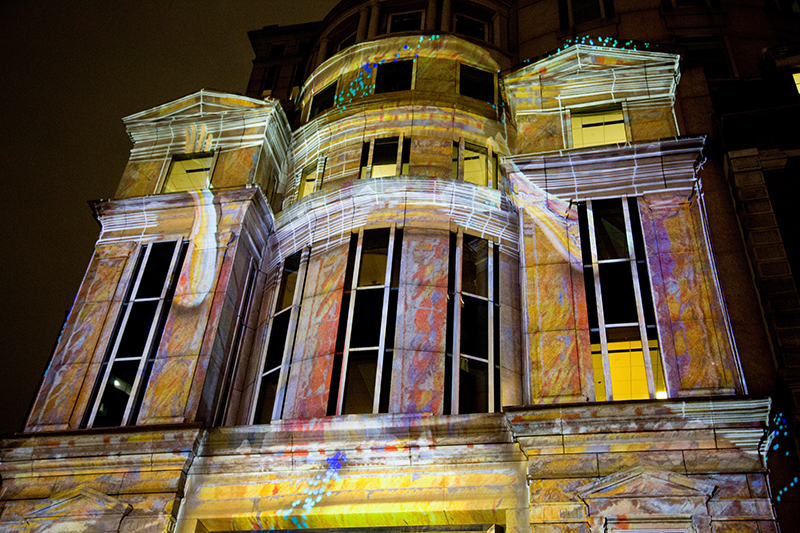
Illuminus Light Festival
Crew
Illuminus:
- Executive Director: Jeff Grantz
- Creative Director: Vanessa Till Hooper
- Guest Curator: David Guerra
Epson America:
- Senior Product Manager: Gavin Downy
- Product Manager: Ramzi Shakra
Gear
Epson Projectors:
- 15 Pro L25000UNL
- 16 Pro L1755UNL
- 4 Pro L1505UNL
- 6 Pro L1405UNL
- 15 PowerLite 2250
Related Links: www.epson.com/rental-and-staging-projector-solutions; www.illuminusboston.org; www.studiohhh.com
